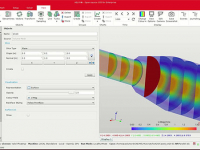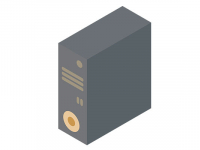
Partner Content
NVIDIA RTX Could Change Use of Raytraced Rendering
April 8, 2019
A mix of AI-powered denoising and raytracing poised to promote real-time product views.

Partner Content
Simulations Slow?
March 8, 2019
More complex, higher-fidelity simulation workflows drive hardware upgrades.

Partner Content
Artificial Intelligence, Machine Learning and Deep Learning for Design
March 8, 2019
Break down the buzzwords to understand and successfully apply AI.

Making the Case for a Workstation-Centered Workflow
February 18, 2019
Paper helps you communicate the causes of your computing frustrations and plots out a path to rectify them.

Partner Content
Visual Manufacturing
February 15, 2019
Modern CAM tools benefit from high-end visualization to keep up with faster speeds, more complex toolpaths.

Partner Content
Configure Your Workstation for SolidWorks
February 15, 2019
Experts weigh in on the best hardware and SolidWorks settings to use in order to maximize engineering design productivity.

Partner Content
A Reality Check for AR/VR
January 14, 2019
As hype and speculation give way to practical concerns, augmented and virtual reality developers continue to incorporate new innovations into their offerings.

Partner Content
Start Fast, Finish Faster
January 14, 2019
How quick simulations at the design concept stage can speed the entire product development process.

Simulate Sooner
December 10, 2018
Getting everyone on the same page and moving in the same direction might be the most difficult aspect of implementing a simulation-led design strategy.

Get Smart About Product Design
December 10, 2018
The Industrial Internet of Things, digital twins and manufacturing simulation all stand to help engineers accelerate the design process.

Digital Design Technology: a New Dawn
November 12, 2018
Today, design engineers have access to affordable, photorealistic rendering, 3D animations and simulation, as well as immersive design technologies like augmented and virtual reality.

Generative Design Challenges Old Paradigms from the Parametric Era
November 12, 2018
The genesis of generative design can be traced back to simulation software, with topology optimization as the intermediary evolutionary step. Generative design software uses time-tested structural, fluid and thermal simulation technologies; however, instead of asking the user to provide the...

Material Matters in Rendering
October 12, 2018
3D printing applications push rendering developers to match new material properties.

Putting Engineering in Reverse
October 12, 2018
How 3D scanning and an underlying hunger to compete is driving the design quest for reverse engineering in global industry.

Partner Content
Selecting the Right Workstation for Simulation
September 20, 2018
This e-guide provides key principles for choosing a workstation best suited for engineering simulation. With proper configuration, workstations can help drive significant productivity gains for users, enable digital transformations across organizations, and, ultimately, deliver greater competitive advantages.
Latest News
Altair Acquires Cambridge Semantics
Cambridge Semantics is a modern data fabric provider and creator of one of the industry’s analytical graph databases

ENGYS Now Offers HELYX v4.2.0
HELYX v4.2.0 is built to help engineers tackle complex computational fluid dynamics (CFD) challenges

Rackable Systems Display Power and Performance
Scalability and space efficiency are just a few benefits of this special breed of workstations.

Nike Crafts New AI Sneakers
Company aims to influence the future of wearable AI technology.
InfoWorks ICM 2025 Delivers Enhanced Cloud Simulation Capabilities
The development team has enabled cloud simulation results to be accessible directly from a user’s desktop.

Emotors Adopts Siemens’ Simcenter NVH Solutions
Company selects Siemens solutions for NVH testing of next-generation automotive e-drives.
All posts
New & Noteworthy

New & Noteworthy: Safe, Cost-Effective Metal 3D Printing - Anywhere
Desktop Metal’s Studio System offers turnkey metal printing for prototypes and...

New & Noteworthy: Direct Neutronics Analysis on CAD
Coreform Cubit 2023.11 workflows enable neutronics directly on CAD for next-generation nuclear energy...

New & Noteworthy: Agile Engineering Collaboration
Authentise Threads is a new software tool for distributed communications and project...

New & Noteworthy Product Introduction: Enterprise VR Headset
Lenovo ThinkReality VRX has an immersive display works with virtual, augmented and...

